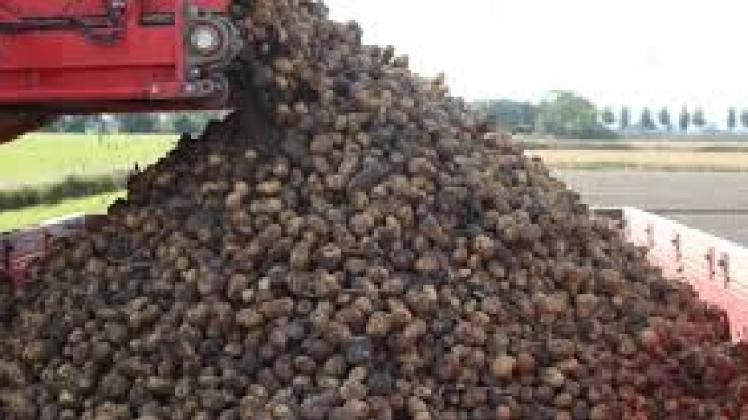Netherlands: Concerns about the threat of Stolbur in potatoes
The Dutch Inspection Service (NAK) is concerned about how to deal with the threat of Stolbur in seed potatoes. The French fry potato sector is also preparing for the arrival of the crop disease, which has already caused significant damage in Germany.

It’s important to raise awareness in the seed potato sector. Both growers during the selection process and our inspectors during the field inspections must be vigilant," emphasizes policy officer Laura van Bezouwen of NAK. This week, she explained the current situation regarding Stolbur in seed potatoes at the international potato event PotatoEurope in Lelystad, Flevoland.
Stolbur is caused by a specific type of phytoplasma, a bacterial-like microorganism without a cell wall. In this case, it is Candidatus Phytoplasma solani, for which a zero tolerance applies at the European level. The Dutch Food and Consumer Product Safety Authority (NAK) is obligated to reject seed potato lots in which the phytoplasma in question is found.
This summer, the Netherlands Agricultural Insurance Agency (NAK) identified the first phytoplasma infection in Dutch seed potatoes, but not yet Stolbur. According to Van Bezouwen, the problem is that the symptoms of this infection are indistinguishable from those of infections with other phytoplasmas. "Only one variant is Stolbur," the policy officer explains.
Spread by glassy-winged cicadas
The phytoplasma Candidatus Phytoplasma solani is spread by the leafhopper vector. Van Bezouwen says it’s difficult to capture the vector, even though the NAK (Netherlands Agriculture and Horticulture Authority) has been monitoring the traps and suction traps used for aphid monitoring for the presence of leafhoppers since early June. "We are therefore concerned about how exactly we should handle this."
The NAK policy officer hopes that seed potato growers can remove a large proportion of plants showing symptoms during selection. Stolbur manifests itself in deformed leaves and stems, pinching of the head, the formation of aerial tubers, a white stem base, and beading, limp, or rubbery tubers.
During this season’s field inspection, the Dutch Association of Agricultural Producers (NAK) examined plants with Stolbur symptoms. These plants are being analyzed in the inspection service’s diagnostic laboratory. Because no Candidatus Phytoplasma solani has yet been found in the submitted disease-affected plants, the seed potato plots in question have not been rejected. Van Bezouwen assures that the NAK has the necessary knowledge and insight to recognize the symptoms.
However, the inspection service did find other phytoplasmas in the laboratory. These are variants that are not regulated at the European level. Therefore, the NAK will discuss a proposed amendment with the advisory board and the standing committees, which will take steps in the process of adapting the inspection system.
Taskforce
Due to the rise of Stolbur in the Netherlands, the French fry potato sector has also been warned of the potential consequences. The Association for the Potato Processing Industry (VAVI) is even establishing a dedicated task force, director Andries Middag announced during his presentation at PotatoEurope.
"We’re building on the knowledge and experience with Stolbur that already exists in countries like Germany, Switzerland, Austria, and France," says Middag. In these countries, the causative phytoplasma is rapidly increasing due to increasing vector pressure. As temperatures rise, the leafhoppers that spread the phytoplasma have a greater chance of survival.
According to the VAVI director, there are significant differences in the susceptibility of potato varieties to Stolbur infection. "I’ve heard from Austrians that the large French fry variety Fontane appears to be virtually insensitive." On the other hand, some starch varieties are very susceptible, he says, without naming specific varieties.
Fuente: Traducido por Argenpapa de: nieuweoogst.nl






